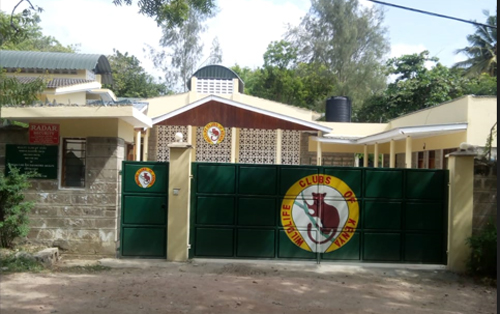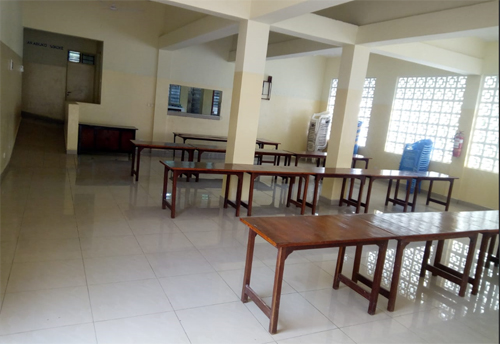Mombasa Regional Centre


In 1993 the Wildlife Clubs of Kenya extended its decentralization programme by establishing the coast regional office. It was meant to highlight on issues of the Marine environmental ecosystems and its resources. Other areas of great importance covered in the coast include; the indigenous coastal forests e.g. the Arabuko Sokoke, the Kaya forests in Kilifi, Kwale and Malindi which have local cultural and spiritual significance. These forests are now under threat to give way to settlement, agriculture, tourism industry and for industrial development.
The disappearance of these forests means destruction of habitats for certain species of mamm als and birds only found in these ecosystems. The Sokoke Scowps Owl and the Clarks Weaver are two ende mic birds to this forest.
Programmes that run at the Coast
Marine Ecology ProgrammeThe Coastal Region of Kenya is internationally noted for its high biodiversity in the oceanic environment, yet the local school children are not exposed to what they have in their environment. Currently there is no other organisation implementing a marine field programme for school children and the opportunity to learn about marine environment is lacking in the formal and informal education in Kenya. Combined with local population growth and pollution issues such as marine debris, the lack of marine education in the current education system makes it urgent and necessary to seek extra-curriculum programme to promote awareness to the marine environmental issues among the youth. To better educate the younger generation in the country, it is necessary to give them direct and first hand experience of the oceanic environment. The Marine Ecology Programme has been developed to implement field excursions in order to enhance marine education and promote awareness among school children.
This being the only marine field programme for the youth in Kenya, it is expected to lead the coastal education in the country. The main objective of the programme is to give the youth an opportunity to practically learn about the marine ecosystems, especially that of the Indian Ocean. It aims to promote awareness among the local students to the marine conservation issues as well as spread interest and knowledge about the marine life. The target ecosystem is that of Mombasa Marine National Park, including creatures cited in CITES Appendix 1 such as the sea turtles and dugongs. This programme has proved to be very exciting and offers an opportunity for most of the participants to learn about the marine environment. Despite the fact that students were born and raised up just next to the sea, most of them had never experienced being in the water nor had an opportunity to practically learn about the marine life. This being the first time for most it acted as an eye opener for students as summarised by s pupil of Furaha Academy “Everything is connected so as we destroy the terrestrial part we are also endangering marine life” At the same time the programme proved to be a good practical activity for senior students in Biology and taxonomy. For students in high school and colleges who take environmental classes the Marine ecology programme has proved to be a really good practical boost to their learning. In both cases, the outcome of this experience is immense: this is an eye opener for the Kenyan children and it shall form a base for the future of marine conservation. Marine Environment Day
The Marine Environment Day is a major annual marine conservation event for the youth and the general public of Kenya. The objective of this function is to create awareness on marine conservation issues among the youth and the pulic and empower them to become a mojor role players for marine biodiversity management. On this day, students from all over the Coast province, together with the community groups, participate and compete in performances such as songs, drama, sand modelling, poetry, swimming and boat racing. All thsese are judged upn the theme chosen for that particular year. The theme highlights the importance of the ocean resources. This is an activity that is run by WCK and other regional partners like KWS, Boabab farm NMK KEMFRI Teachers. Man and sea, this programme strives to involve the youth in schools to participate in marine conservation awareness campaign and to empower them to be generators of positive changes in marine environmental management. Human’s relation to the marine natural resources should be highlighted to urge the importance of sustainable development. Students from the entire coast region are invited to participate in the following activities:
-Sand modelling according to the theme
-Performance related to the theme
-Swimming and many others, the theme changes year after year.
In an effort to regionalise the activity, member schools from Tanga Tanzania have on two occasions running participated in it. Observers from Zanzibar have also attended and we hope in the next one members from this Island will participate; we hope to make it even wider to include others from other countries in the Indian Ocean.
Following the success of this programme and taking into account distance, schools in Lamu benefit to a much smaller prototype of the Marine Environment Day (Kiunga Marine Environment Day) organised by the Worldwide Fund for Nature (WWF). This activity takes place every September of the year.
Environmental Advocacy/Campaigns
- Community outreach
- Marking International day celebrations e.g. world environment day, world oceans day, world wetland day among others
- Beach clean ups
School Outreach Programmes
- Tree planting exercise
- Waste management practices
- School beautification
- Interactive lectures discussions
Mobile Education Unit
- Lectures
- Documentaries
WCK is a pivot point to visit town area, beaches, south coast, and up to malindi in a day’s trip and back. Some sites of interest while at WCK include:
- Haller Park / Butterfly Pavilion - Nature Nguuni Sanctuary - Nature Mombasa Marine Park - Nature Jomo Kenyatta Public Beach - Beach => Neighbors WCK Mombasa
- Fort Jesus / National Museums of Kenya - Historical Mama Ngina Drive - Historical Old Town - Historical => Mombasa Town
- Arabuko Sokoke Forest - Nature Gede ruins - Historical Vasco-da-Gama Pillar - Historical Malindi Marine Park - Nature => Kilifi / Malindi
- Arabuko Sokoke Forest - Nature Gede ruins - Historical Vasco-da-Gama Pillar - Historical Malindi Marine Park - Nature => Kilifi / Malindi
- Shimba Hills National Reserves - Nature Mwaluganje Elephant Sanctuary - Nature => South coast(Kwale)

